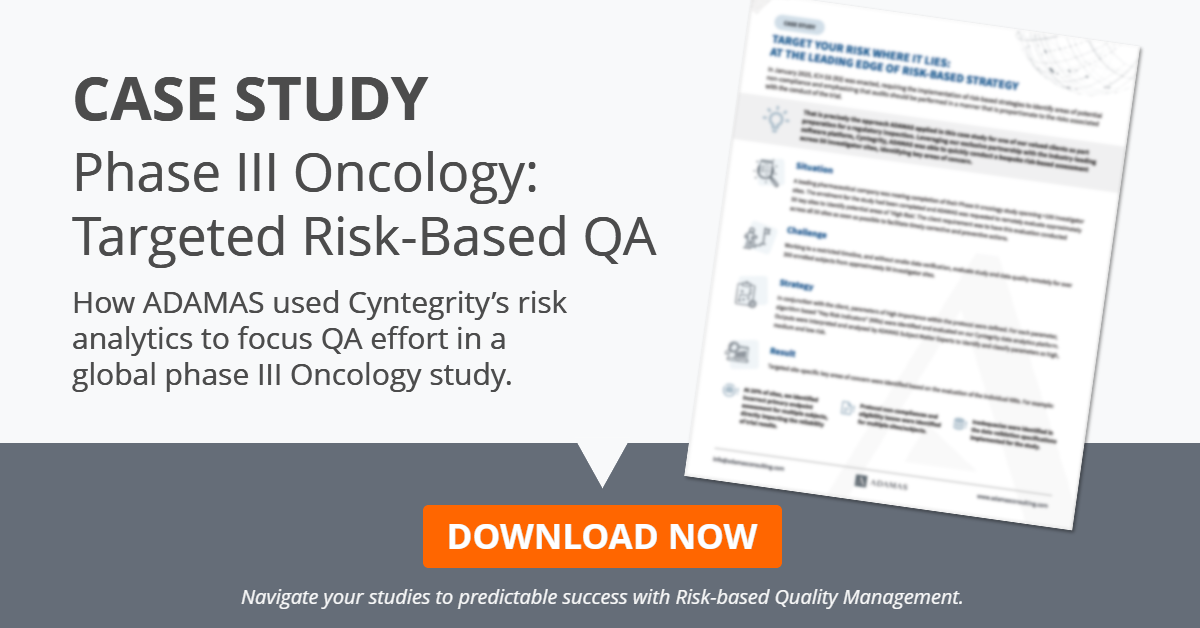When Lost-to-Follow-Up Could Lead to Non-Acceptance
Some of the major challenges (risks!) in clinical trial conduct include delays in data entry, misconduct at the site, degradation of data quality (due to lost-to-follow-up cases/Informed Consent withdrawn cases), etc. Risk Based Quality Management has evolved through the use of data in order to mitigate these risks. For e.g. using audit trails from the EDC systems to check for data integrity, and by establishing timelines of important events. The following case study illustrates how the MyRBQM® system helped solve these problems using the principles of Risk Based Quality Management.
CASE STUDY IV: Acceptance by Health Authorities
A high number of lost-to-follow-up or IC withdrawn cases causes a reduction in the effective sample size as the investigators will be missing outcome measures on those who are lost. It may lead to bias if the follow up rates are different among comparison groups and if attrition is related to the outcome. Additionally it can also lead to non-acceptance by the health authorities/ regulatory bodies.
What went wrong?
In a large Cardiovascular outcome trial with 8000 patients, the MyRBQM® Portal predicted the study would end up with 1300 cases of lost-to-follow-up or informed-consent-withdrawn cases.
How was this predicted?
With its prediction feature, the MyRBQM® Portal predicted an outcome, which was how many patients would likely have withdrawn their informed consent based on a few data early in the study.

How was this risk addressed?
KRI = number of patients lost to follow up / informed consent withdrawn was used to trigger an alert the moment the ratio between the number of patients in the study and the number of patients lost to follow up and/or informed consent withdrawn exceeded 1%
In addition, the prediction feature was used to demonstrate that in the worst case – the number of informed consent withdrawn / lost to follow up cases would be about 1300.
Why was the MyRBQM® Portal used?
- The organization could take appropriate mitigation actions and ensure that at least a follow up call with the patient could be established.
- To ensure that the number of those particular drop out cases remained at an acceptable level, so that sufficient information about the outcome could still be collected for the analysis.
Download: CASE STUDIES | How the MyRBQM® Portal Optimizes Clinical Trials

The relationship between information and risk/opportunity has changed. Clinical trials generate more searchable information than they used to. Integrated, time stamped audit trails automatically track and record what study teams and site staff do, who they communicate and collaborate with and at what point in time; the technology they use also captures subtler user information, such as how well individual users adhere to the protocol, how quickly they enter the data and how fast they respond to queries.
As more clinical recording systems become interconnected, so the amount of information clinical trials inadvertently create will continue to grow. Risk-based Quality Management has evolved through the use of data in order to mitigate risks and provide optimization opportunities.






